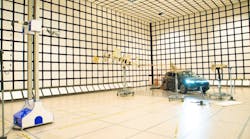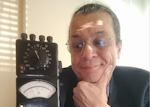When it comes to automotive systems, reliability and safety are paramount, especially in systems designed for emergency response. Mandatory on all new vehicles, eCall is a system used across the EU that automatically makes an emergency call if the vehicle is involved in a serious accident.
When activated, eCall connects the driver and/or passengers to the nearest emergency response center. It also sends a set of data about the vehicle location, the time of the accident, the VIN, and direction of travel.
In a planned update to the UN ECE R10 standard, additional eCall testing immunity scenarios have been developed to enhance the safety of drivers, passengers, and other road users. Compliance with UN ECE R10 is crucial and everything must be tested to ensure the systems don't interfere with other electronic components in the vehicle and aren't affected by external electromagnetic interference.
To address this demand for compliance certification, Applus Laboratories and Rohde & Schwarz demonstrated the integration of eCall testing in an electromagnetic-compatibility (EMC) test environment. They performed different eCall testing scenarios and capabilities in compliance with the UN ECE R10 standard, which regulates automobile-related EMC. The demonstration uses the R&S CMW500 cellular network emulator with R&S CMW-KA09x eCall test software simulation and a Public Safety Answering Point (PSAP).
The R&S CMW-KA09x eCall test software supports 2G-, 3G-, 4G- and 5G-based emergency call systems, and can be used to test eCall with Long-Term Evolution (LTE) and 5G NR (Next Generation eCall or NG eCall) in line with the EU eCall, NG eCall, UN-R144, and other national standards.
During the demo, an immunity test was conducted in a radio anechoic chamber at Applus+ in Spain. Radio interference was introduced, and the test confirmed the feasibility and ease of establishing an emergency call between the automobile and simulated PSAP server with the R&S CMW500 eCall test solution.
In the test, the minimum set of data was successfully transmitted from the test vehicle to the R&S CMW500 without any data loss, voice communication was established, and the vehicle's received GNSS position was accurately transmitted. Attendees to the demonstration included the United Nations Informal Working Group on Electromagnetic Compatibility (IWG EMC) and community representatives from various countries, as well as vehicle manufacturers from the International Organization of Motor Vehicle Manufacturers (OICA).

